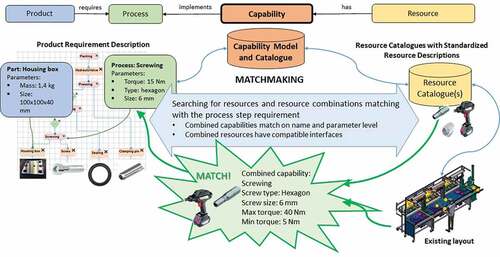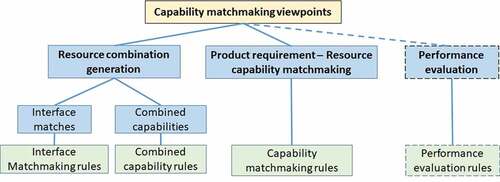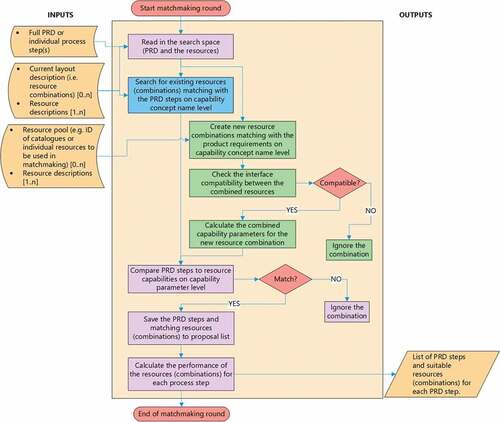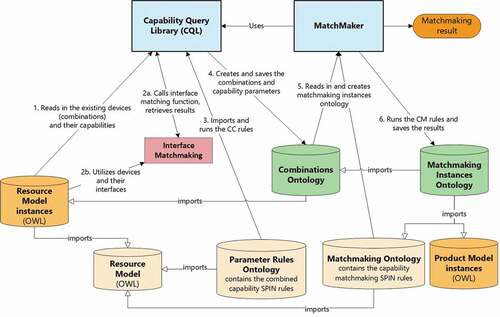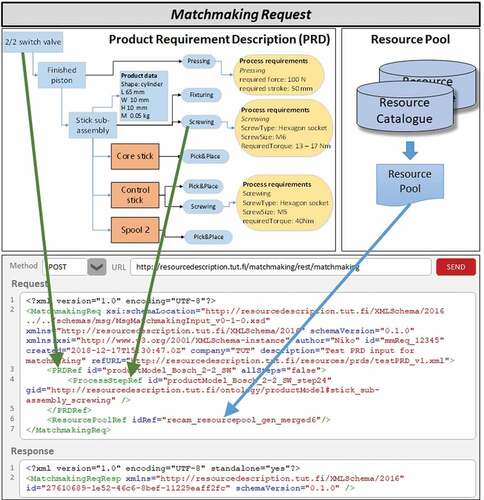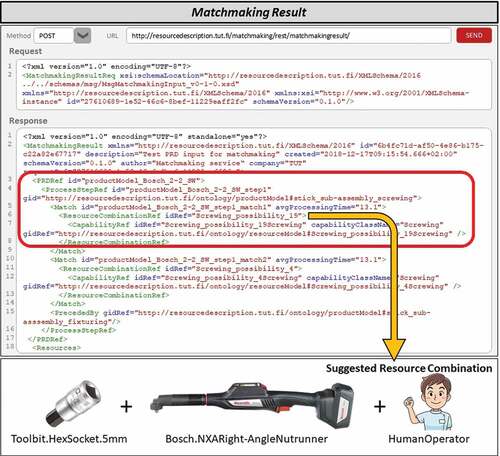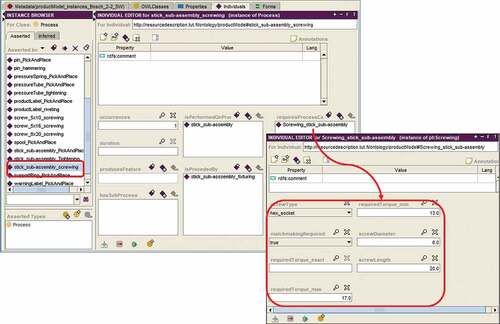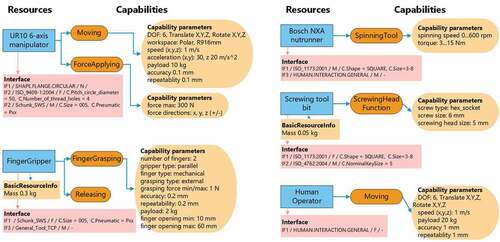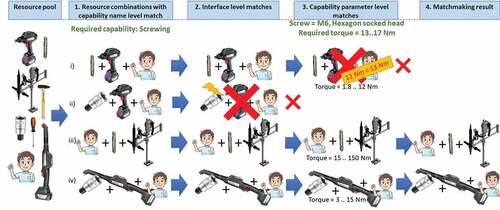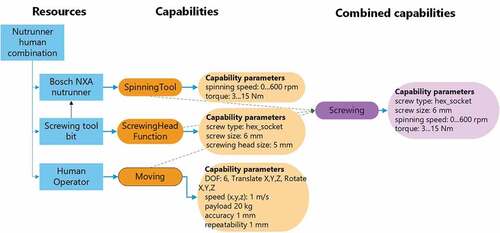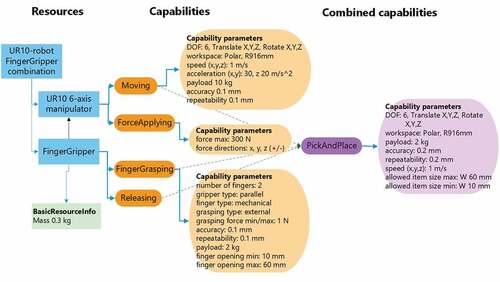Figures & data
Figure 2. Information models used for capability matchmaking. (Modified from Järvenpää et al. (Citation2019b) by adding the ontology namespace acronym to the brackets.).
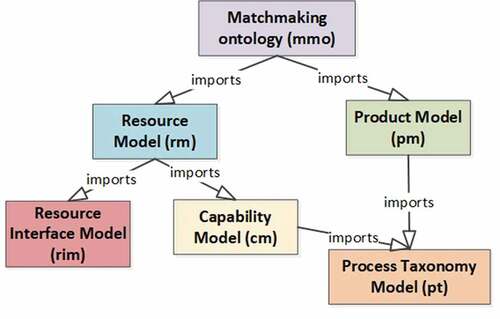
Figure 3. Simplified view of the matchmaking ontology. (Modified from Järvenpää et al. (Citation2019b) by adding namespace definition in front of the class and property names and reorganizing the elements to improve readability).
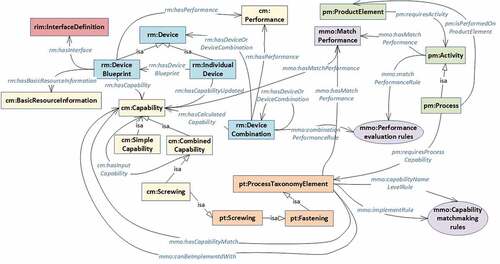
Figure 6. Overall software architecture of the capability matchmaking system, modified from Järvenpää et al. (Citation2019b).
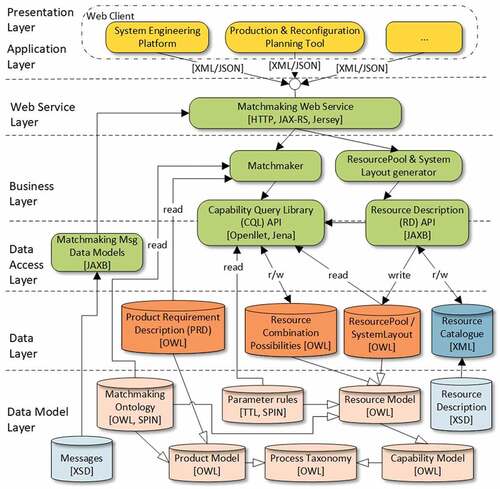
Table 1. Inputs (resource pools) and results of the matchmaking tests

